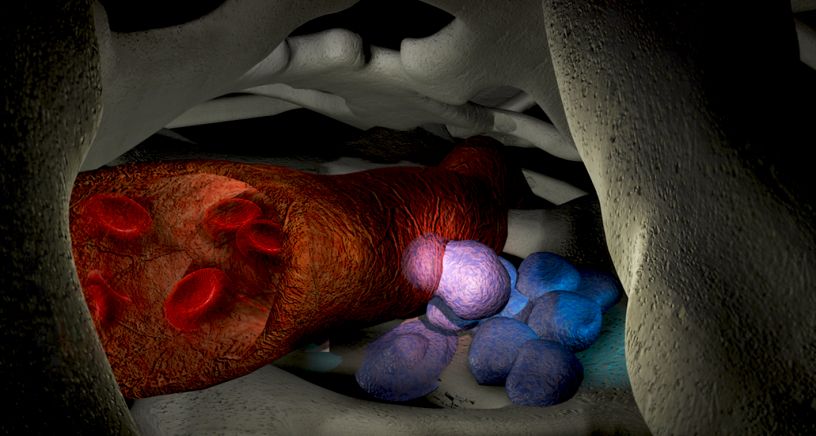New way to harvest stem cells better for donors

For bone marrow transplantation, stem cells are routinely harvested from healthy donors and used to treat patients with cancers including leukaemia.
Current harvesting methods take a long time and require injections of a growth factor to boost stem cell numbers. This often leads to side effects.
The discovery, published today in Nature Communications , reduces the time required to obtain adequate numbers of stem cells, without the need for a growth factor.
The method, developed by a team of CSIRO researchers working within the manufacturing arm of CSIRO with the Australian Regenerative Medicine Institute (ARMI) at Monash, combines a newly discovered molecule (known as BOP), with an existing type of molecule (AMD3100) to mobilise the stem cells found in bone marrow out into the blood stream.
CSIRO researcher Dr Susie Nilsson said her team was able to demonstrate that combining the two molecules directly impacts stem cells so they can be seen in the blood stream within an hour of a single dosage.
“Current treatment requires the donor to have growth factor injections for several days leading up to the procedure,” Dr Nilsson said.
“Using the new method eliminates the need for this, meaning a procedure that once took days can be reduced to around an hour.”
Until now AMD3100 has only been effective in increasing stem cell numbers when combined with the growth factor.
“But the growth factor can cause unpleasant side effects like bone pain and spleen enlargement for some donors,” Dr Nilsson said.
“Other donors simply don’t respond well, and their stem cell count never gets high enough for a successful transplant.”
The scientists found that combining the two small molecules not only eliminates the need for the growth factor, but when the harvested cells are transplanted they can replenish the entire bone marrow system, and there are no known side effects.
Professor Peter Currie, ARMI Director, said a major benefit of the discovery is that harvesting stem cells will become more efficient and effective, considerably reducing the stress for donors, which in turn benefits patients.
“We’re looking forward to seeing patients benefit from this discovery,” Professor Currie said.
So far successful pre-clinical studies have demonstrated the effectiveness of the treatment.
The next step is a phase 1 clinical trial assessing the combination of BOP molecule with the growth factor, prior to the eventual successful combination of the two small molecules BOP and AMD3100.
